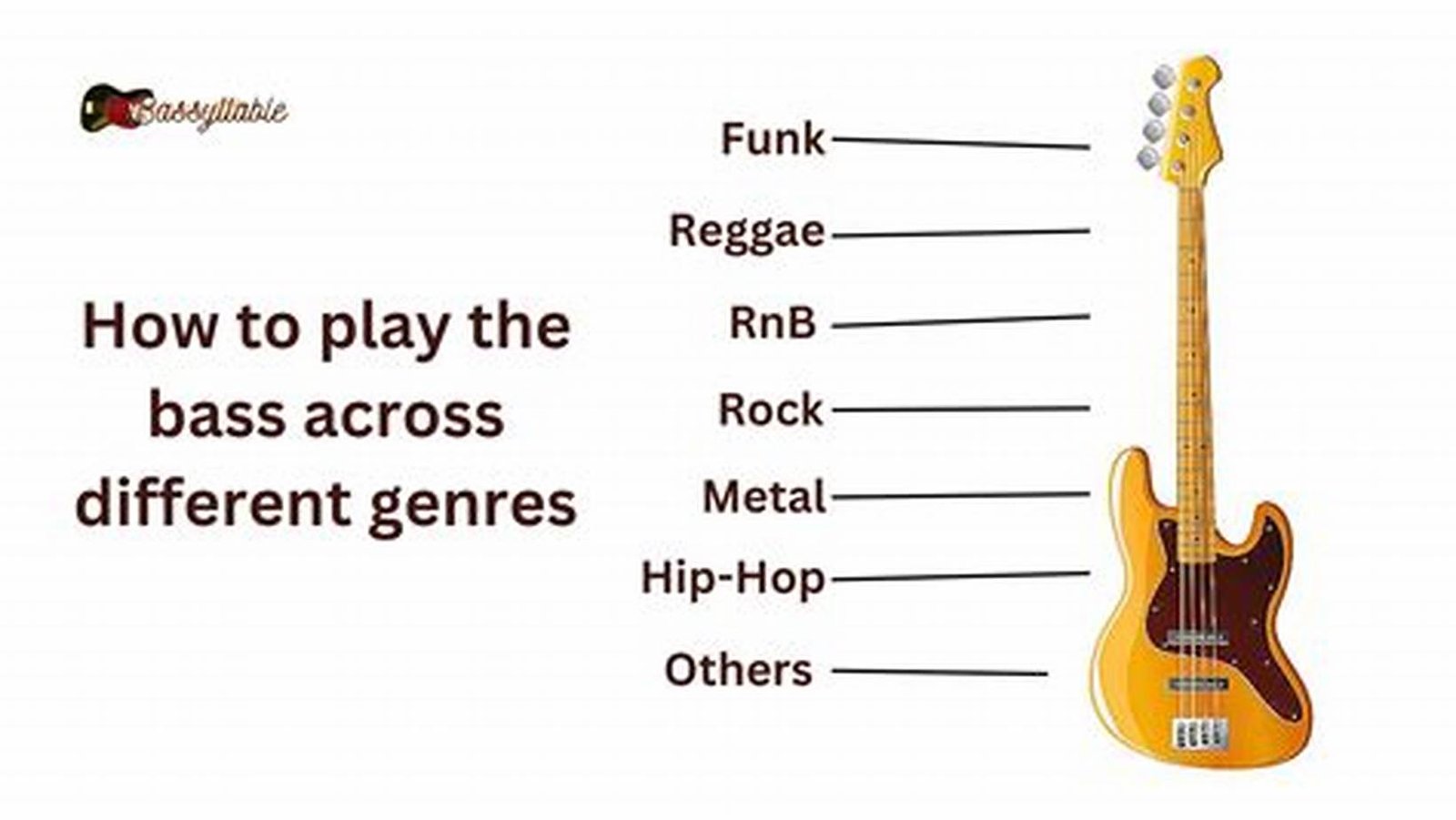Every bass player has a unique approach to their instrument, and developing your own distinctive playing style is a rewarding part of becoming a musician. Your bass playing style is influenced by your musical tastes, technique, creativity, and personal expression. Whether you’re a beginner or an experienced player, understanding how to cultivate your own style will help you stand out and develop a deeper connection with the music. Here are steps to help you find your unique bass playing style.
1. Experiment with Different Techniques
Your playing style is greatly shaped by the techniques you use on the bass. The more you experiment with different styles, the more you’ll discover which ones feel natural to you and suit your musical preferences.
- Fingerstyle: This technique is popular in rock, funk, and jazz, where you pluck the strings with your fingers, allowing for a smooth and dynamic sound.
- Slapping and Popping: A staple in funk, slap bass adds percussive elements to your playing, creating a punchy, rhythmic sound.
- Pick Playing: Using a pick can provide more attack and clarity, especially in genres like punk, metal, and pop.
- Tapping: Popular in progressive rock and metal, tapping allows for faster, intricate melodies.
Try incorporating each technique into your playing and see which one aligns best with your musical identity.
2. Learn from Your Influences
Your favorite bassists and the genres you love can offer insight into your playing style. Listen to bass players who inspire you and analyze their techniques. It’s not about copying their style but rather drawing inspiration from their approach.
- Classic Rock: Bassists like John Paul Jones (Led Zeppelin) or Paul McCartney (The Beatles) are known for their melodic, supportive bass lines.
- Funk: Jaco Pastorius and Larry Graham were pioneers of the slap bass technique, offering unique grooves and rhythmic complexity.
- Jazz: Bassists like Charles Mingus and Stanley Clarke focus on improvisation and intricate lines, which might influence your approach to phrasing and timing.
Pay attention to how they approach rhythm, harmony, and melody, and adapt elements that resonate with you.
3. Develop Your Ear
Being able to play in different styles is crucial, but finding your own unique sound also comes from learning how to “hear” music in your own way. A great way to develop your ear is by transcribing bass lines and experimenting with improvisation.
- Transcribing: Listen closely to bass lines from your favorite songs and try to play them by ear. This helps you understand how bass fits into the music and strengthens your musical vocabulary.
- Improvisation: The more you improvise, the more you will find your own voice on the instrument. Try jamming along to different musical styles, using what you’ve learned from transcriptions and experiments.
Improvisation can unlock new techniques and creative pathways that feel more natural to your playing style.
4. Find Your Groove
Bass playing is often about locking in with the rhythm section and supporting the overall groove of the band. Your groove will be one of the most important components of your playing style. Work on finding your own feel, whether it’s a laid-back, syncopated groove or a fast-paced, driving rhythm.
- Play with a Drummer: A great way to develop your groove is by playing along with a drummer. Their rhythm section will guide you, helping you refine your timing and pocket.
- Focus on Timing: Even if you play the most complex bass lines, they need to be tight rhythmically. Use a metronome to practice and develop a strong sense of time.
As you practice, focus on playing bass lines that complement the drummer and help create a solid foundation for the song.
5. Experiment with Tone and Effects
Your bass tone is an essential aspect of your playing style. Experimenting with different basses, amplifiers, pedals, and effects can completely change the way you sound. The tone you choose can emphasize your style, whether you prefer a clean, punchy sound or a deep, saturated tone.
- Basses and Pickups: Different basses (e.g., Fender Jazz, Gibson Thunderbird) and pickups can drastically alter your tone. Experiment with various instruments to find the one that best suits your sound.
- Pedals and Effects: Effects such as overdrive, chorus, and delay can add texture to your playing. Experiment with these tools to see how they enhance your musical expression.
Finding the right tone can set the mood for your bass lines and make your playing more distinct.

6. Embrace Your Musical Identity
Your personal taste and influences play a huge role in how you develop your unique bass style. Think about the music you enjoy playing the most and how it reflects your personality as a player. Your style should represent you, so don’t be afraid to embrace the genres and sounds that resonate most with you.
- Blend Styles: Don’t limit yourself to one genre. Mix elements of different genres to create something that is all your own.
- Trust Your Instincts: Your natural playing instincts will guide you to discover sounds that feel authentic. Trust your inner ear and follow your creative impulses.
7. Keep Evolving
Finding your unique bass style is a continuous journey. As you gain more experience and exposure to different music, your style will continue to evolve. Stay open to learning new techniques, experimenting with different genres, and collaborating with other musicians.
- Keep Challenging Yourself: Push your boundaries by learning more advanced techniques or styles you’ve never explored before.
- Collaborate with Others: Playing in different musical settings, whether it’s in a band or with other musicians, will help you develop your sound even further.
Conclusion
Finding your unique bass playing style is a process that takes time, experimentation, and self-expression. By exploring different techniques, learning from your influences, developing your ear, and embracing your groove and tone, you will discover a style that is uniquely yours. Keep evolving, trust your instincts, and most importantly, enjoy the journey of becoming a bass player with your own signature sound.







